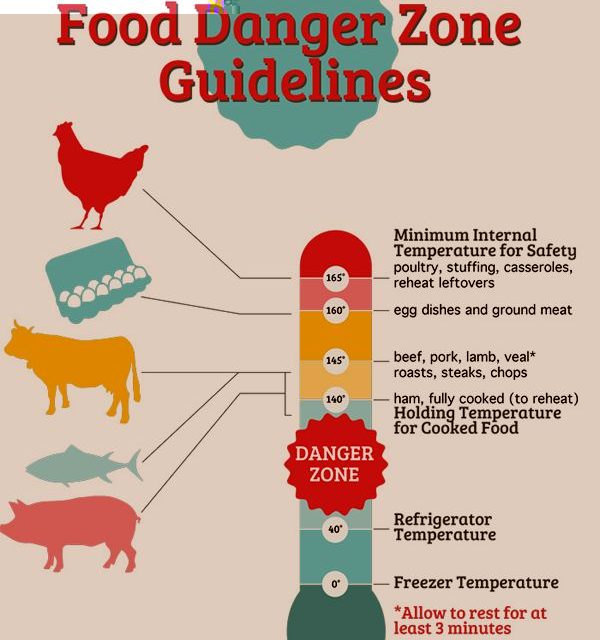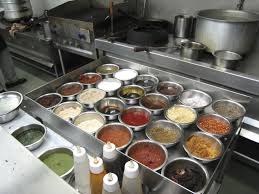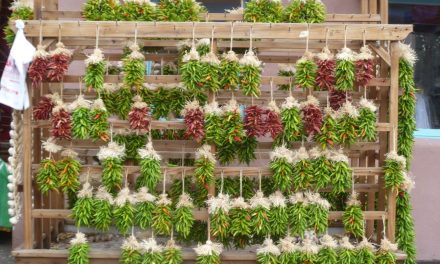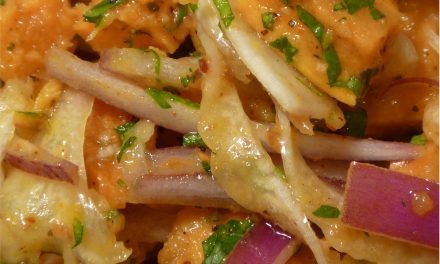Happy National Food Safety Month!
As a professional chef I learned early the proper food safety handling techniques. I’ve gotten funny looks over the years from roommates and partners for my “crazy whacked out kitchen habits.” It was those whacked out habits that kept them from getting sick. As I work more and more with home cooks, I’ve discovered many do not know how to take care of their food properly.
Keep Your Family Safe!
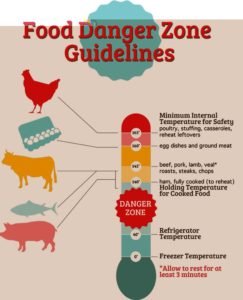 Have you done this? Placed hot food into a deep container, covered it with a lid, and put it immediately into the refrigerator? It’s what you were taught, right?
Have you done this? Placed hot food into a deep container, covered it with a lid, and put it immediately into the refrigerator? It’s what you were taught, right?
Nobody warned you that covering hot food and placing it immediately into a cold environment allows for the growth of harmful bacteria. Bacteria that can potentially make you very ill, and could even cause death.
When hot food is put into a closed container and stored in the refrigerator, the food stays hot longer. This provides the perfect breeding ground for all sorts of bacteria to grow. After sitting through the eight-hour class that awarded me ServSafe certification I can tell you, it is not something you want living in your stomach or bowels.
So how can you make sure you are keeping your loved ones safe from these tiny microbes that grow only in 40 degree or less temperatures (or above 140 degrees)?
6 Easy Steps for Cooling Down Food
Here’s the Food Safety Procedure for cooling food, from the National Food Safety Council:
- Let the food start to cool on the counter, usually until it stops steaming. This keeps your refrigerator from working overtime and prevents warming up the other food around it.
- Place food in a shallow container. Divide leftovers if necessary. Deeper containers do not allow for fast cooling.
- DO NOT COVER
- Keep a spoon in the food and occasionally stir it around.
- Cool food to 41 (F)degrees or below, ideally within a two hour window.
- Once the food is cooled to 41 degrees (F) and below, it can be covered or frozen.
Invest in a good thermometer to help stay on track with safe food handling procedures. Like with cooking, you can set timers to remind you when the food is cool enough to cover.
Remember, leftovers have an expiration date. Always label your food with the date of storage. Most foods are only safe for 3-5 days.
For more information on how to handle food properly head over to Safe Guidelines for Food Handling.
Why Follow these Steps?
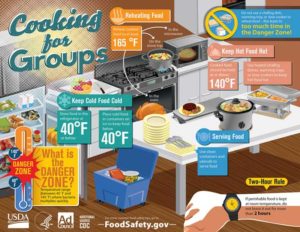 If these steps seem bothersome or too much trouble, remember you took the time to make your family and friends really great food. It deserves the time and attention when storing it for later use. When taken out you want to enjoy the food, not spend time in the ER.
If these steps seem bothersome or too much trouble, remember you took the time to make your family and friends really great food. It deserves the time and attention when storing it for later use. When taken out you want to enjoy the food, not spend time in the ER.
I do want to say that while researching this article I discovered that the food safety charts include how long you can safely store meats, and meats with vegetables, but they do not list how long to store cooked and processed vegetables. While I know to use the same guidelines for my food, others might not know this. Just a little tip for the vegans!
Looking for an easy way to cool down food? Watch this short video I made for a simple hack for cooling food quickly.

